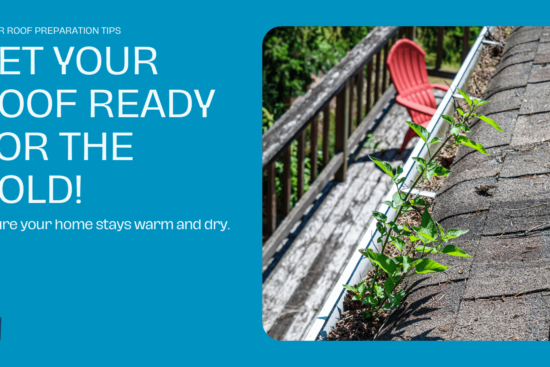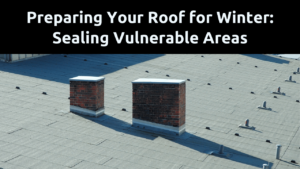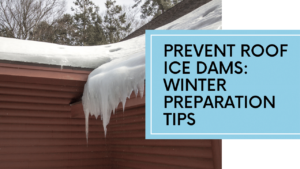© All Rights Reserved | Roof Replacement and Repair - Zaman Roofing LLC. | Website Design & CT SEO Powered by High Point SEO CT
- Google Rating5.0Based on 33 reviewsZaman Roofing - CT Roofing Contractors & Roof Repair5.0Sergey Y."Zaman Roofing” recently completed a roof replacement project in our condo complex, and we are extremely satisfied with their service. From start to finish, their team demonstrated professionalism, efficiency, and exceptional craftsmanship. They were prompt in their communication, providing detailed explanations and answering all our questions. The crew arrived on time, worked diligently, and completed the project within the estimated timeframe.Not only did Zaman Roofing exhibit outstanding technical skills, but they also ensured minimal disruption to our daily activities. They took great care to protect our property, cleaning up thoroughly each day and leaving no trace of debris behind.The quality of the new roof is outstanding. Zaman Roofing used top-grade materials and paid attention to every detail, resulting in a sturdy and visually appealing finished product. The roof has significantly enhanced the overall appearance of our condo complex.We would highly recommend Zaman Roofing to anyone in need of roofing services. Their professionalism, expertise, and attention to customer satisfaction make them a reliable choice for roof replacements. We are grateful for their excellent work and would not hesitate to hire them again in the future.Christopher Z.Zaman Roofing was AWESOME!!!! This is my third time doing a roof in CT on my third home and Zaman did an outstanding job on my rather unique roof line. They even replaced a skylight. I needed a Roof Contract in place before insurance would allow the purchase because the seller was a DeeBag. Zaman worked with my realtor, banker, etc and even waited patiently while the seller delayed the process by 4 months. The week I closed, Zaman Roofing was up and at em. Stripping, prepping and replacing. In and Out. Property was nice and clean after the work was complete. I would highly recommend.Steve TZaman Roofing, located in Berlin, CT, truly excels in providing top-notch roofing services. I am absolutely thrilled to give them a well-deserved 5-star review for their outstanding work. They have proven themselves as experts in roofing Berlin CT, and I couldn't be happier with the results.When it comes to roofing in Berlin, Zaman Roofing stands out from the competition. Their team of skilled professionals demonstrated exceptional attention to detail during the installation of my new roof. They meticulously handled every aspect of the project, ensuring both aesthetics and durability were top-notch.What impressed me the most was Zaman Roofing's commitment to customer satisfaction. From my initial contact with them, they were responsive, courteous, and eager to understand my specific roofing needs in Berlin. Their exceptional customer service throughout the entire process made me feel valued as a client.Zaman Roofing's expertise in roofing Berlin is truly commendable. They have an extensive portfolio of successful projects throughout Berlin, CT, showcasing their skill and knowledge in a variety of roofing styles and materials. Regardless of the complexity of the job, they have the necessary resources to deliver exceptional results.I cannot emphasize enough how satisfied I am with Zaman Roofing's services in Berlin, CT. Their professionalism, reliability, and dedication to their craft are unparalleled. If you're searching for exceptional roofing services in Berlin CT, Zaman Roofing is the company to choose. They will exceed your expectations in every way.In conclusion, Zaman Roofing unquestionably deserves a stellar 5-star rating for their exemplary roofing services in Berlin, CT. Their expertise in roofing Berlin and roofing Berlin CT shines through in their exceptional workmanship and customer service. I highly recommend Zaman Roofing for all your roofing needs.Gary G.Zaman replaced the roof on my 2,200 sq. ft. colonial in 2015. The workmanship was perfect. Unfortunately, over time, the top-of-the line shingles discolored. He was totally supportive in getting the manufacturer to replace them at no cost to me. He just replaced the roof with the new shingles. It was another perfect job. It was completed in one day. The crew was great and they cleaned the area spotless.Chris DWe used Zaman Roofing for our Roof and Gutter Replacement, I acquired 5 quotes for the work and found Zaman to be the most reasonable, it was a Good Decision to choose Zaman Roofing, Seweryn was Professional in every aspect and the Clean-up was nothing short of Amazing, I would Highly Recommend using Zaman RoofingRobert D.Excellent Service and Value - great crew and easy to deal with - highly recommended !Sunghoon P.Great work and reasonable price. I am so happy with their service. I asked a bunch of questions before and after the service and his responses were very prompt and straight to the point. Highly recommend.Adrienne M.I am so pleased that I used this company. My new roof looks fantastic. Such a hard working crew. Seweryn was informative and professional. Price was very completive. Don't hesitate to use them you will be very satisfied. Highly recommend!Nancy M.Good communication, timely response and knowledgeable. Very happy with our experience and highly recommend this company.Beata M.We used Zaman for our roof replacement recently and are very pleased. They replaced our roof in one day and gave us a very competitive quote. Good quality of work. Highly recommended.Lori K.They were here when they said they would. Professional & left everything neat ,cleaned up everything. They were in & out in a day & a half. Would recommend Zaman roifing.Dan R.A+ service, professional and quick response time.Anna G.Zaman and his crew provide great workmanship they installed new roofs they take great pride in the work they do. They were punctual and did a amazing job with the roof installation and clean up. Highly recommend Zaman Roofing to family and friends. Thank you for the opportunity to work with such a amazing contractorScott M.Awesome contractor, I would highly recommend him to family & friends. Seweryn & his crew were here on time & worked diligently. They were the happiest workers I've ever dealt with (I am a former construction project manager with the Federal government). Any & all questions were answered. My neighbors couldn't believe they finished the job in one day & complimented how great the new roof looks.Clement D.Great roofing contractors. I love to recommend it to my friends and family.Karen 9.With the quality, price, timeliness, all round nice guy and great crew, Zaman Roofing LLC is what other companies aspire to be.... Clean, helpful and a pleasure to recommend....james C.Excellent experience from start to finish, all appointments and work times met in a timely fashion, workmanship and clean up left nothing to be desired.Would be a definite recommendation, very pleased.Margaret B.I had obtained multiple quotes and did my due diligence research and Seweryn Zaman came back with fair price and good recommendations. He was professional, explained everything that he was going to do and never once he rushed me during decision process. He showed up on time with his hard working crew and finished my roof in one day. I was amazed with his crew who worked like busy bees. Very impressed with the clean up process and the end product. Two months after he finished my roof he was still helping me deal with the insurance company making sure I had everything I needed. Thank you SewerynSteve B.Very professional and easy to work. The crew came in, replaced my roof and then cleaned up everything! Highly recommended.Jim O.Competitive quote among four others. Seweryn Zaman provided larger color samples of the shingle colors we were interested in. He obtained the building permit, showed up on the day expected with his entire crew. Our older roof was on 24" trusses and needed more plywood replaced than anticipated. He got the additional sheets replaced on the day of the re-roofing. The crew worked with him late until the job was done and picked up every piece of old debris. The roof passed final town inspection with no concerns. Zaman Roofing is easy to deal with; he's responsive on text messages and phone calls. I used them in the past for an emergency repair and he found a well-hidden leak from the builder.Dale C.The crews did a good job, and the leader of the crew did a great job when they replaced the roof of my house in Farming on 7/6&7 this year. When they worked on the project, they worked professionally and in detail. We are very pleased with the work they have done, and highly recommend people to have the company worked on their roof projects.Forrest B.Zaman's was very professional, excellent quality of work and very responsive to our needs. This roofing experience was excellent from start to finish and provided an excellent value. Would certainly recommend them to any friend.Yonatan M.We used Zaman Roofing to replace our roof in 2019 and could not be happier with the service and product. A highly professional company and great personal interaction with the owner. The workers took great care of our landscaping, and the owner was there frequently to supervise the work and take care of finishing touches like flashing the chimney. We have had zero issues since then and highly recommend this company.Quinn V.Zaman was awesome. He was communicative, on-time, and was able to give me a quick inspection of our roof despite the rain. I rarely have a contractor tell me that I didn't need to spend any money, but Zaman told me my roof was fine for the next several years.magdalena K.We recently used Zaman Roofing to replace our 26-year-old roof. Right from the start they were great! Sevy was extremely professional and knowledgeable and gave us a great quote. Everything was done as they described and the final project looked great. The owner was on the job from start to finish as he promised.Ariadna G.Our experience with Zaman Roofing was excellent. I was very impressed with both their work and their customer service. Seweryn was very knowledgeable and professional.Larry G.What a wonderful business. Very responsive. They showed up exactly when expected, completed the project quickly and accurately and left no trace after clean up. All with a very competitive price. I would highly recommend Zaman to anyone looking to have roofing work done.STEVE R.I was very pleased with the roof and gutter repairs performed by Zaman Roofing on two of my buildings. Good workmanship and fair prices, I would recommend and use again.Danielle D.These guys stripped and reshuffled my roof is 1 day! They did an awesome job. Roof is beautiful. He uses a dump trailer which is great and they cleaned up well. Very happy with the work. Also pricing was fair.

How to Prepare a Roof for Winter Weather
Category: Roof Repairs • June 10, 2024
Everyone should prepare their roofs for the coming winter because cold winter weather can cause damage to a roof if not prepared. An unprotected roof, for example, can develop leaks, ice dams, and other problems when it is assaulted by heavy snow and ice, as well as freezing temperatures. If you take your time and follow the winterization tips covered here, it will save you from having to spend lots of money on repair work later on. Read on to learn some practical strategies to follow in preparing your roof for winter and the ensuing harsh weather conditions.
Everything related to the roofing system should be inspected, and if a problem is found or suspected, such as roof damage, then it’s best to repair it as soon as possible.
Visually examine the shingles for signs of wear or for any signs that they are too old to provide adequate protection. Check for loose, cracked, and missing shingles, and repair any issues or replace them to avoid water leaks. Focus on vents, skylights, and chimneys, especially, because much of the time they can be leaky.
Check for any signs of leakage, and repair any and all damages before the onset of winter weather. Small damages–such as a leak left unattended—can be capable of leading to bigger issues as water turns to ice and then dilutes when it rains.
Check the condition of the flashing in the chimney area, vents, and valleys on the roof. Make sure all the protruding flashing is properly secured, and fill in any crevices or openings which may allow water penetration and ice backs.
Clear the snow and ice from the roof, gutters, and downspouts to ease the process of drainage during melting. Gutters that are clogged will result in ice and these can easily damage the shingles or may lead to cases where interior leaks occur.
Seal Vulnerable Areas
– Use a sealant, especially around the vents, skylights, and chimneys, to ensure there are no openings where water can infiltrate the house. Purchase and apply an exterior flexible sealant that is specifically designed for use on roofing materials.
– Cover all openings on the roof deck and where the roof joins the walls of the home, sealing any cracks and exposed nail heads. This makes it easier for the roof to shed water, particularly in conditions where there is wind-driven rain and snow.
– Make sure to apply a roof sealant around the flashing, the valleys, vents, and joints to reduce the chances of moisture infiltration. Keep in mind that it is better to use a sealant that is long-lasting and rubberized.
Manage Roof Ice Dams
Ice dams occur when ice forms along the roof top and melts as it flows to the colder edges of the roof. This retains water that can siphon on the shingles and bring about leaks. To discourage ice dams:
– Install waterproof membrane liners or rubberized asphalt underlayment at the often exposed areas of the eaves to the shingles. This provides an opportunity for the melting snow and ice to run off the roof floor as opposed to infiltrating from the bottom.
– Cover the eave edges with metal ice dam membranes or heating cables which are commonly referred to as de-icing systems. They also help reduce the chances of formation of ice layers as water is free to drain off in the right manner.
– Use a fascia drip edge with flanges extending to beyond the fascia board. This ensures that water from melted snow falls off the roof rather than trickle under the roof edge.
– Sweep roof floor at the areas of overhangs and valleys frequently during winter, since this is where snow tends to accumulate. Doing this causes better drainage and smaller chances of ice dams forming on roofs. A roof rake can be used for snow management from the ground without causing complications.
Trim Overhanging Tree Branches
– A tree standing next to the roof should have most of its branches trimmed to avoid contact with the roof. Heavy snow and ice can also build up on branches overhanging the roof and the weight can cause branches to break and then fall on the roof, damaging the shingles.
– Remove any objects such as leaves, pine needles, and any other organic material from the roof before the onset of the winter. Rainwater tends to accumulate on debris, and when this happens and is encased in snow, it results in the decay of shingles or leads to the growth of fungi.
Make sure your roof is properly winterized so that your roof system is not damaged, your interior doesn’t become flooded with water, and so your structure is not compromised when the snow and ice build up. It is also important to check the roof sometime before the winter season begins so that any necessary repairs–sealing as well as other preventative measures–can be done. Preparing your roof for winter is important since it leads to lower energy bills and reduces the likelihood of having to repair the roof during the colder months. Taking some time–even a few minutes–to prepare the roof for winter can spare you thousands of dollars in the long run.




